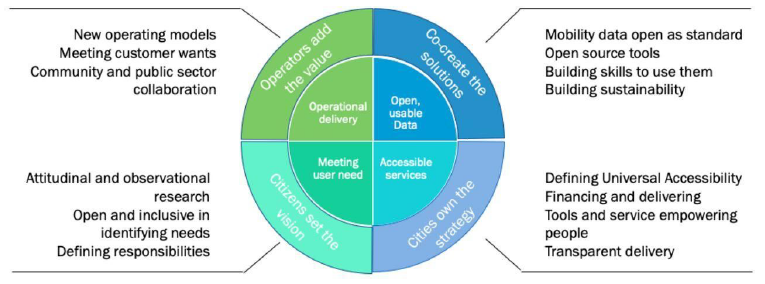|
For the recent Transport Practitioners Meeting in Oxford, our founder James Gleave collaborated with Hannah Budnitz, Nic Cary, and Teresa Jolley on a paper that established the context for a new way of delivering transport planning. Listening to the debates that took place over the two days at TPM, it was clear that there is the appetite for doing transport planning differently. But how? Our paper sets out that opportunity. At the core of our thinking is that we should not necessarily seek a completely user-centred approach to transport planning, nor is the current status quo able to deliver against the challenges set out by the United Nation's Sustainable Development Goals. There must be a two-way dialogue between equals. As much as the city authority cannot solely own the vision for the city, nor can citizens or operators be expected to deliver the whole strategy. Everyone has a stake in the future of their area. With transport being in such a state of flux, there is a question about the validity of forecasting specific futures. Whilst new data sources and new operational models can provide more insight, this does not necessarily translate into better foresight, giving uncertainty as to whether specific actions will result in transport planners meeting specific policy goals. But they do provide a range of opportunities, notably:
Regardless of this, We should challenge the validity of a single organisation having sole responsibility for a vision of the future. Everybody has a stake in the future of their area. It is therefore reasonable for them to expect that their voice will be heard and to hold people accountable for any decisions made on their behalf. Visions for the future of mobility therefore need to be established through highly collaborative engagement exercises, including understanding user needs, so that the resulting vision is shared, even if delivery responsibility rests on a few organisations. You can read the full paper online right here. And please provide comments in the comments section below.
0 Comments
Leave a Reply. |
Categories |


 RSS Feed
RSS Feed